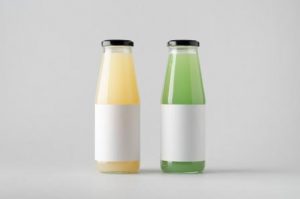By Jen Johnston, CHHC, senior marketing services account manager, for the Step into Natural blog series
Clean Label. At first the definition of this phrase sounds as if it should be a simple one – a brand without harmful (dirty) chemicals. But what is meant by “harmful” or “dirty”? Or maybe it would be better to define clean label as a brand with only good ingredients. Hmm…which ingredients are good and which are bad? Perhaps clean label means fewer ingredients. But who decides any of this? It depends on who you ask.
If you feel confused about what is or isn’t clean label, you are not alone. Last spring, New Hope Network reported on a study that had been published in Food Research Journal which sought to understand clean label, but only identified that “consumers evaluated product cleanliness by looking at the front of food and beverage packaging in addition to the back-of-pack nutrition and ingredients label.” No surprise there, but that doesn’t help us get to a definition of what clean label really is.
In the quest to define it, my opinion is that few have been thinking about the “what,” as in what drives those consumers to evaluate the label. What are they looking for? Many things, it seems, and those things are different for everyone.

I personally like how the panel of speakers at this year’s Grocery Manufacturers Association’s Leadership Forum encouraged industry executives to think of “clean label”, as reported by Food Business News: “Think about clean label less as a defined term and more as a spectrum of attributes.”
The Food Business News article goes on to say that the spectrum is evolving into customized eating (and I would say customized self-care as well) which “sits at the intersection of simplicity, transparency, health and wellness, ingredient avoidance, sustainability and other attributes that may drive consumers to make a purchase.”
Millennials, currently ages 22 through 37, are driving the movement toward “cleaner” products. The Instagram hashtag #eatclean, for instance, has been used upwards of 49 million times, more than #glutenfree, #dairyfree and #paleo combined, according to New Hope Network. But do they even know what it means? Do they just like the idea of cleaner products? Do they just like the way it makes them feel?
A few organizations are attempting to help consumers figure it all out. Clean Label Project is one such group. They provide one- to five-star ratings for products in these categories: sunscreen, protein powder, dog and cat food, and baby food, with plans to evolve into prenatal vitamins, little kid foods, household cleaners, pet care, edible oils, cosmetics, kid’s personal care, cereals, pet supplements, fish oil, sweeteners, juices, supplements, snacks, dairy, and spices. They also offer a Clean Label Project certification program.
Go Clean Label takes a different approach. They provide consumers with lists of what various stores consider to be clean label; in other words, which ingredients are on the retailers’ banned lists. They also have their own list of banned clean label ingredients based on the retailers’ lists that a brand cannot have if it wants to apply for their clean label certification. The site does not, however, go down to a SKU level.
What does all this mean for your store? Clean label trends go beyond the grocery store. Drugstore products with things like parabens, phthalates, dyes, and colors are being passed over by shoppers more and more. Perhaps you believe these substances to be safe, but remember, the customer is king. Right or wrong, shoppers are trending toward fewer ingredients per product and fewer ingredients that are considered unsafe by influencers. You also may want to keep “cleaner” snacks at checkout that appeal to your natural shoppers.
Have you thought of creating your own clean label policy or list of banned ingredients? How do you think your shoppers would respond? Would they applaud your commitment to safety and reward you with sales? Or would they scratch their heads and throw up their hands? The answer is different for every store. I recommend looking at your customer demographics very closely. If you notice the trend toward cleaner products in your community, you may want to consider it!